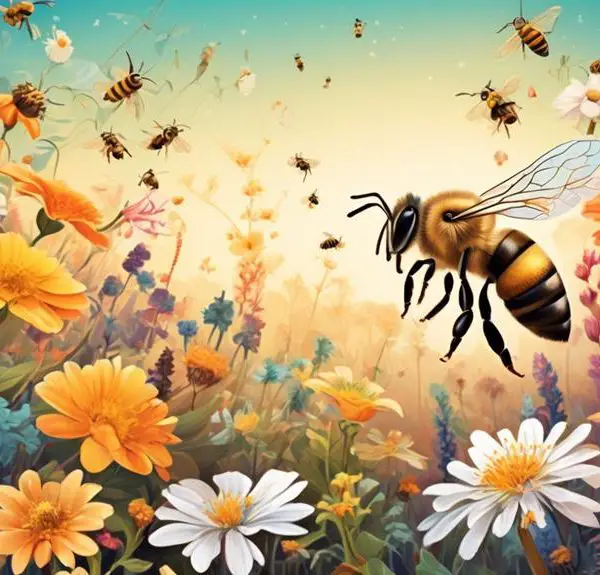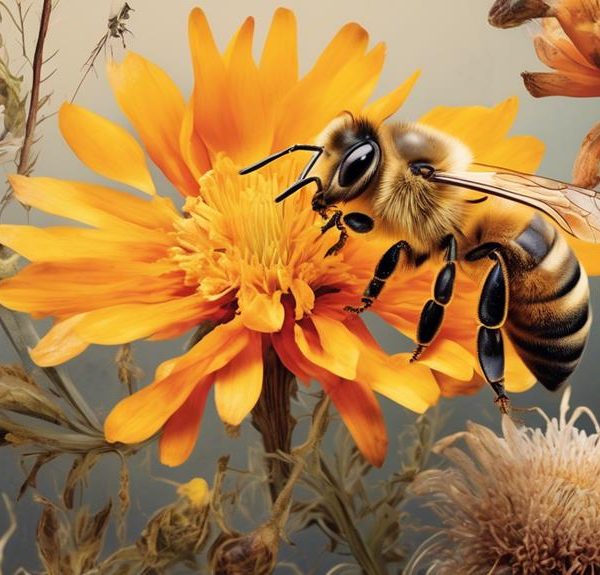Sting or not to sting? Discover the surprising truth about honey bees' aggression towards humans.
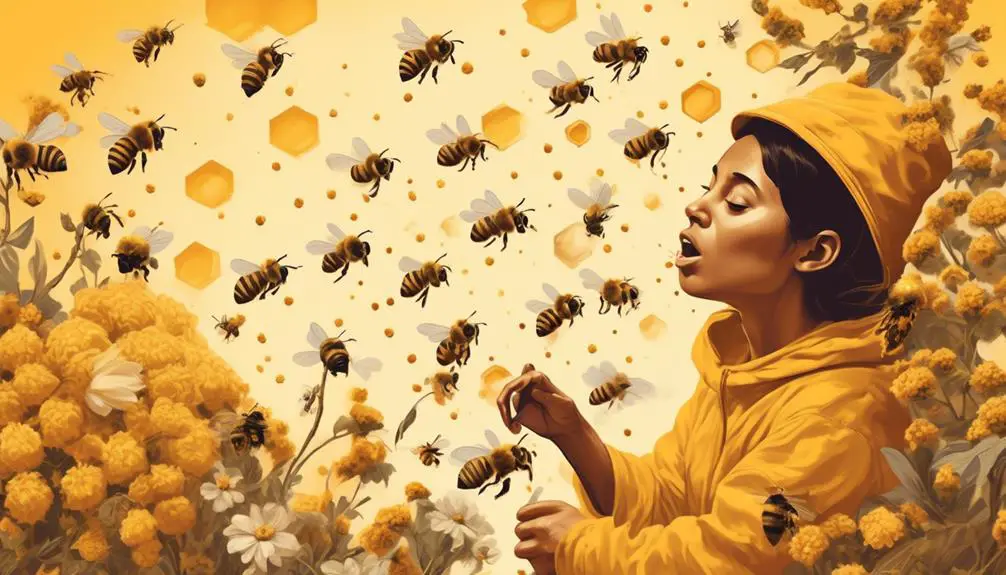
Are Honey Bees Aggressive to Humans
You might not know this, but honey bees aren't naturally aggressive. They're often seen as a buzzing nuisance ready to sting, but in reality, these creatures are more interested in collecting pollen and nectar than picking a fight.
However, it's important to understand that they will defend their hive if they perceive a threat. So, the question isn't so much 'Are honey bees aggressive?' but rather 'What makes honey bees become aggressive?'.
Let's explore this further and unravel the mystery behind the behavior of these fascinating insects.
Key Takeaways
- Honey bees defend aggressively against threats to the hive.
- Bees may react aggressively to physical contact, dark colors, and alarm pheromones.
- Understanding bee behavior and triggers can help avoid provoking aggressive reactions.
- Preventing bee stings involves strategies like staying calm, keeping a safe distance, and avoiding scents that attract bees.
Understanding Honey Bee Behavior
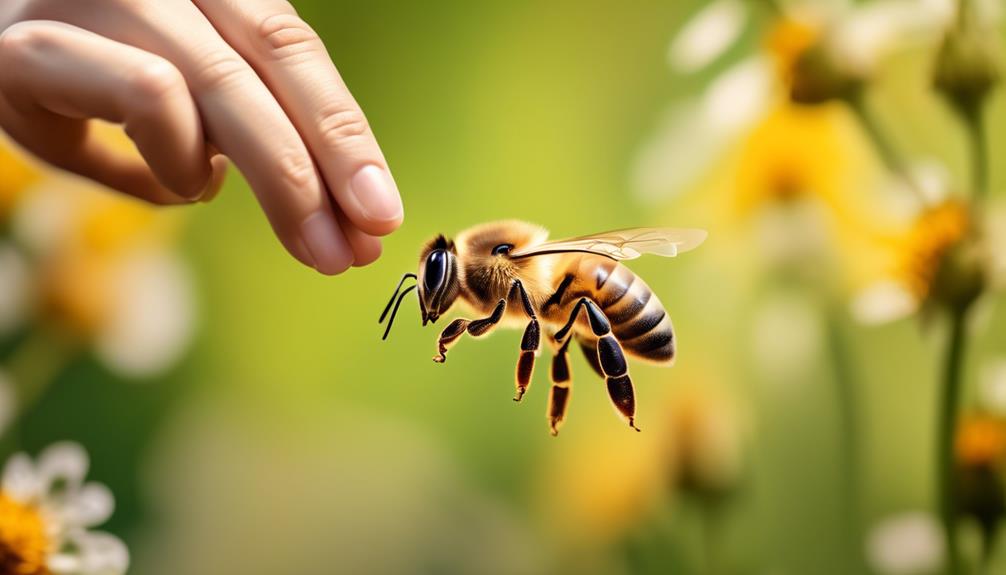
To truly grasp why honey bees might appear aggressive, you first need to understand their fundamental behaviors and social structure. Honey bees live in a complex, highly organized society, where every member has a specific role. The queen, drones, and worker bees all contribute to the functioning of the colony.
Worker bees, the ones you're most likely to encounter, are primarily female and their roles include foraging for food, caring for the young, and protecting the hive. They're wired for defense and their aggression is usually a response to perceived threats to the colony.
Honey bees communicate through an intricate language of dances and pheromones. When a bee stings, it releases an alarm pheromone that alerts other bees to danger, leading to further aggression. It's important to note that honey bees don't sting out of malice; they sting as a last resort, because it results in their death.
Understanding these behaviors can help you appreciate that what might seem like aggression is usually just a survival response. Bees aren't out to get you; they're just doing their job—protecting their colony.
Triggers for Honey Bee Aggression
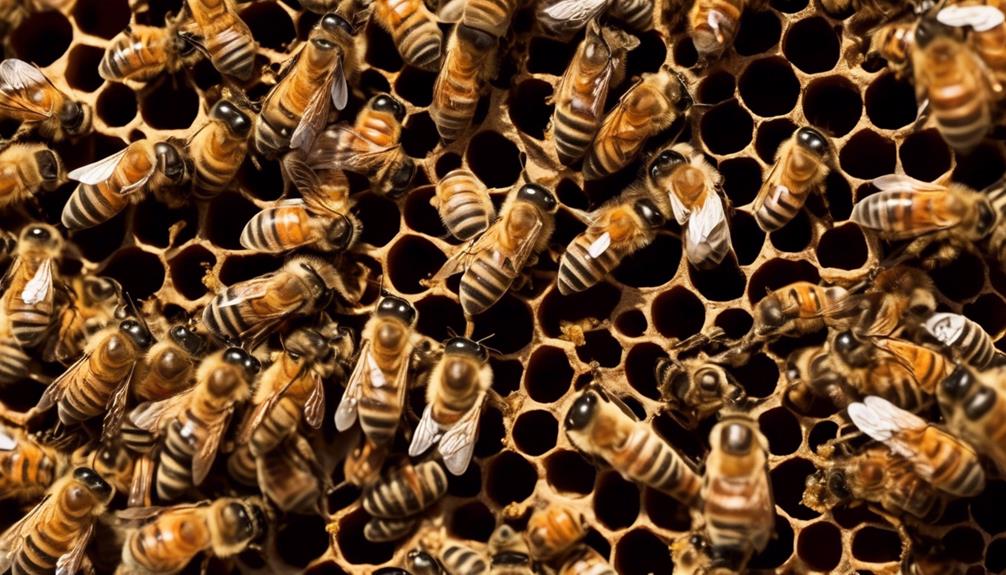
While understanding honey bee behavior is crucial, it's also essential to identify specific triggers that can provoke their defensive aggression. Honey bees aren't naturally aggressive, but certain stimuli can incite them to attack.
Trigger | Explanation |
|---|---|
Threats to the Hive | Honey bees are highly protective of their colony. If they perceive a threat, they'll vigorously defend their hive. |
Physical Contact | If you accidentally touch or disturb a honey bee, it may consider this a threat and react defensively. |
Pheromones | When a honey bee stings, it releases an alarm pheromone that signals other bees to attack. |
Dark Colors | Honey bees are more likely to attack dark colors, which they associate with predators. |
Comparing Honey Bees and Other Bees
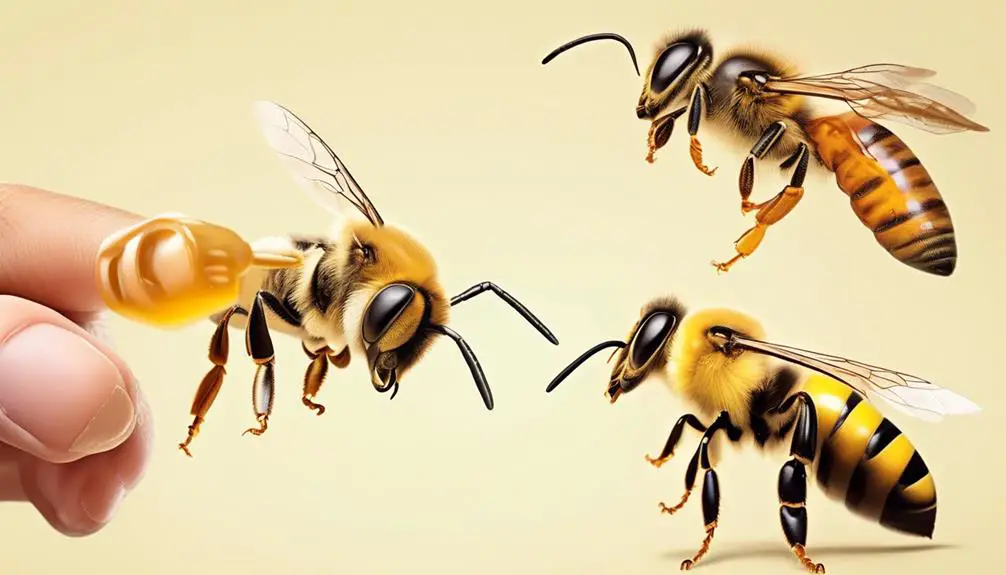
Often, people can't tell the difference between honey bees and other types of bees, yet understanding these distinctions can significantly help mitigate potential threats and improve bee conservation efforts. Honey bees are typically amber and brown, with a fuzzy body that has a clear waist. They're social creatures, living in large colonies and producing honey. They're not naturally aggressive and will only sting if they feel threatened.
On the other hand, you've got bumblebees, which are larger, fuzzier, and have a black and yellow striped appearance. Unlike honey bees, they can sting multiple times without dying. They're also social, but their colonies are smaller.
Then there are solitary bees like carpenter and leafcutter bees. They're less likely to sting as they don't have colonies to protect. Carpenter bees are large and shiny black, while leafcutters are smaller and brownish.
Wasps, often mistaken for bees, are more slender with a narrow waist. They're more aggressive, can sting repeatedly, and their sting is typically more painful.
Recognizing these differences isn't just about avoiding stings. It's also vital for conservation. All bees play crucial roles in pollination, but with different species facing different threats, targeted conservation strategies are essential.
Strategies to Prevent Bee Stings
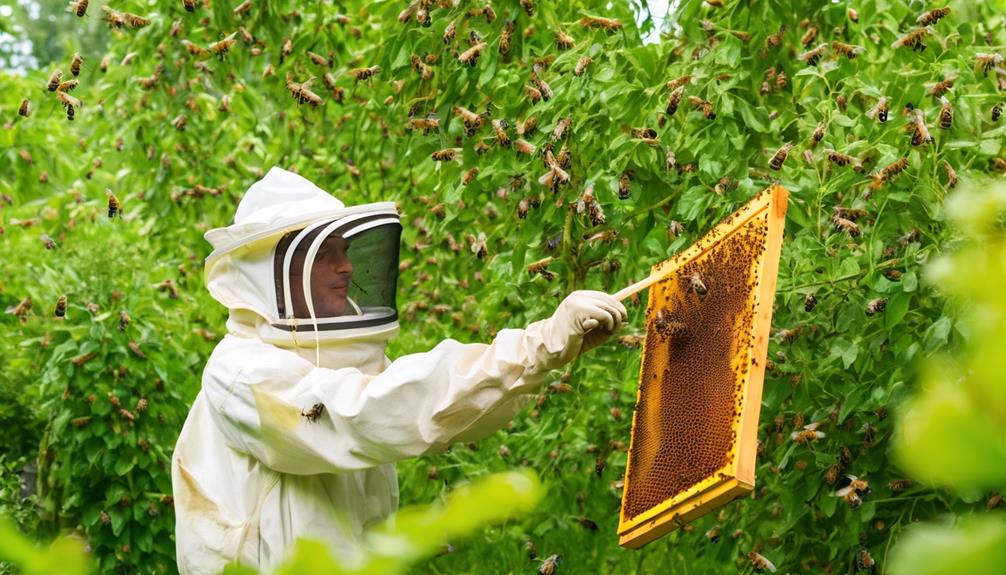
Understanding the differences between bee species is as crucial for their conservation as it is for your personal safety, so let's explore some strategies to avoid being stung.
First, be mindful of your surroundings. Bees often nest in trees, shrubs, or underground. If you spot a hive, keep your distance. Remember, bees don't typically attack unless they feel threatened.
Second, avoid wearing bright colors or floral prints, as these can attract bees. Similarly, scented soaps, lotions, or perfumes can also draw them closer.
Here's a table to illustrate key prevention strategies:
|Strategy|Description|Why it Works
— | — | — |
|---|---|---|
Mindful of surroundings | Stay away from bee nests | Bees defend their hive |
Avoid bright/floral prints | Bees are attracted to these | They resemble flowers |
Skip scents | Bees may think you're a flower | They're attracted to sweet smells |
Stay calm | Don't swat at bees | It may provoke them |
Cover food/drinks | Bees are drawn to sugary substances | It's a food source for them |
Lastly, if a bee does approach you, try to stay calm and still. If you swat at it or panic, you may provoke it. And always remember to cover your food and drinks outdoors as bees are drawn to sugary substances.
The Impact of Human Behavior on Bees
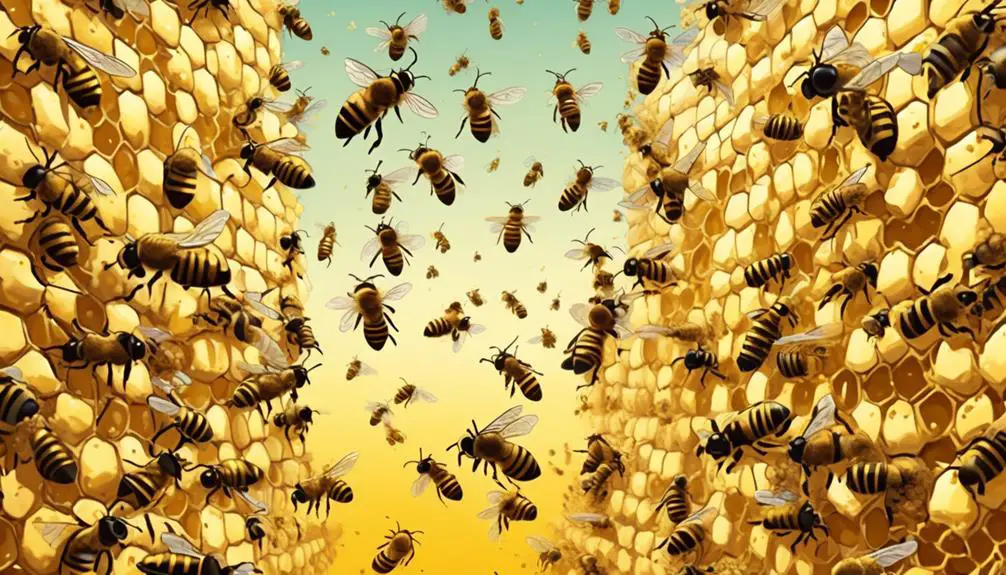
Human actions can significantly influence the well-being and survival of bees, and it's essential to understand how our behaviors impact these vital pollinators.
For instance, your use of pesticides can have harmful effects. These chemicals can weaken the bees' immune systems, making them more susceptible to diseases and parasites, or even cause death directly.
When you cultivate your garden with a limited variety of plants, you're restricting the bees' food sources. A diverse array of flowering plants provides a balanced diet and better nutrition for these insects. Also, if you're not providing a clean water source, you're neglecting another essential need of bees.
Your choice to keep bees, if not done responsibly, can also lead to problems. Overcrowding of hives, or introducing bees to areas where they're not native, can disturb the local ecosystem and stress the bees.
Lastly, climate change, largely caused by human activities, affects bees too. Changing weather patterns can disrupt their foraging and mating habits, leading to population decline.
You mightn't realize it, but your actions have a profound impact on bees. By understanding this, you can make more informed decisions that support their survival.
Conclusion
In conclusion, honey bees aren't naturally aggressive towards humans. However, certain triggers like threats to their hive can incite defensive behavior. Compared to other bees, honey bees are relatively peaceful.
Avoid sudden movements or interfering with their colonies to prevent stings. Remember, your actions can significantly impact their behavior, so strive to coexist peacefully with these industrious insects, understanding their importance in the ecosystem.

